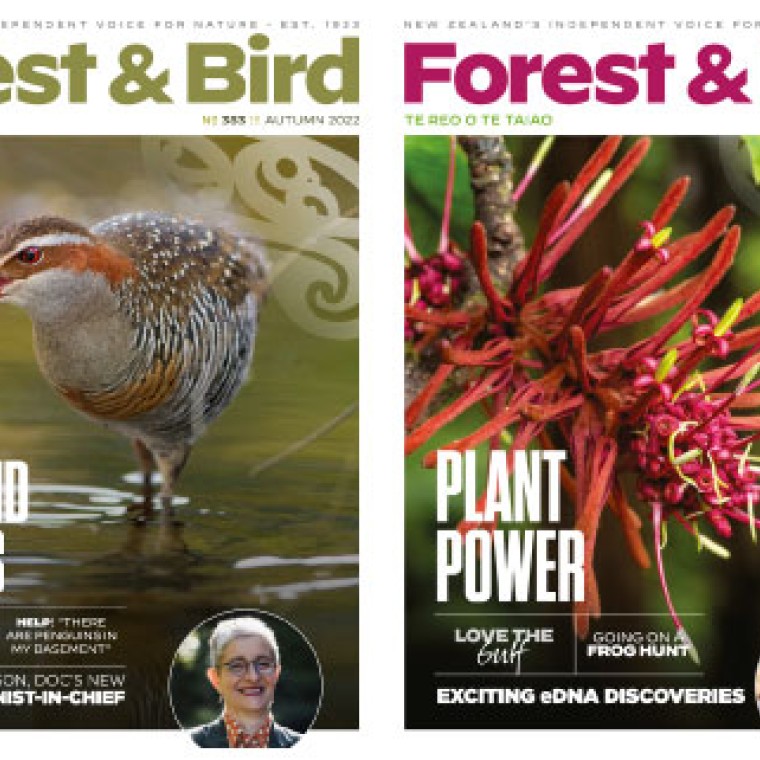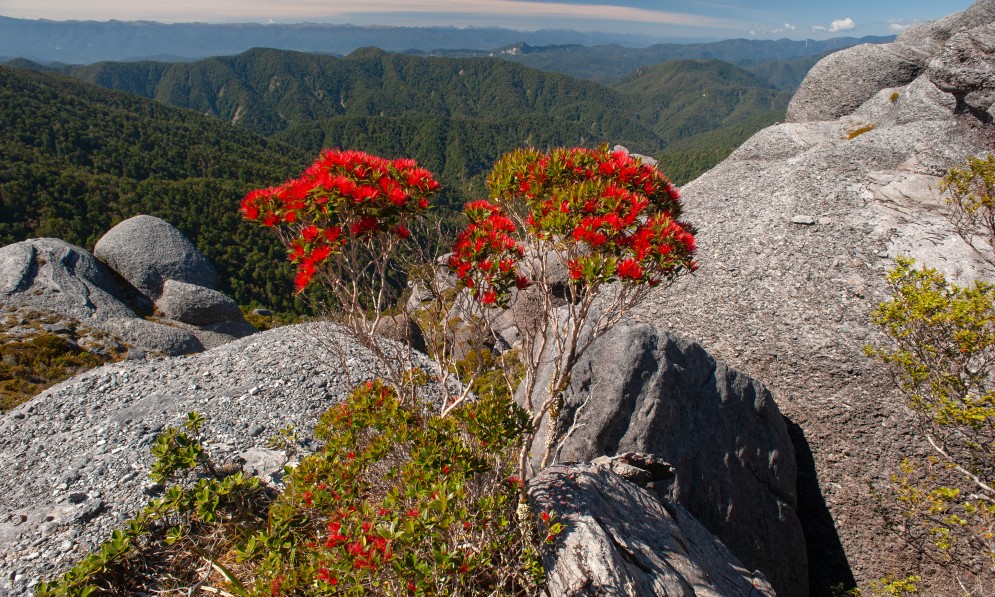Harsh conditions on the Denniston Plateau have given rise to an elfin world of tiny trees, wetland tussocks, and fascinating lichens. By Lynley Hargreaves
Forest & Bird magazine
A version of this story was first published in the Spring 2025 issue of Forest & Bird magazine.
Rated by DOC’s own scientists as one of the top 50 most ecologically valuable sites on mainland New Zealand, Denniston is a unique “lost world” of botanical as well as animal treasures.
Since its formation, millions of years of weathering have left a nationally outstanding ecosystem of unusual geological formations, elevated wetlands, and bare sandstone pavements with scant pockets of soil for vegetation to gain a foothold.
At more than 600m above the coastal plains, Denniston Plateau is often windswept, frequently foggy, and freezing during winter. The environment encourages plants to hunker down and hug the ground out of the elements. Here, plant life is dwarfed and ancient, largely safe from browsing mammals and introduced predators.

Sir Alan Mark. Image Caroline Wood
Sir Alan Mark, Emeritus Professor in Botany at the University of Otago, says the unusual combination of geology, soil chemistry, and microclimate has combined to create a globally rare mosaic of wetland and upland plant communities.
Sir Alan, who successfully fought to Save Manapōuri in the 1970s, believes Denniston should be reclassified and protected as scientific reserve.
“I think that would be an appropriate category. Its scientific values aren’t questioned,” he said.
“On its own, Denniston would be too small to rank seriously for world heritage status, but together with Kahurangi the wider area would really qualify as a World Heritage Area.”
Giving evidence for Forest & Bird in the case against the Escarpment Mine, south of Denniston, in 2012, Sir Alan told commissioners the plateau was internationally significant.
“There were many unique features, and I felt that it was very special in the context of New Zealand biodiversity,” he said.
“The gradation from grassland to shrubland to coniferous podocarp forest was better represented there than anywhere else in New Zealand.”
Sir Alan points to the rare and fragile ecosystems of the plateau, particularly the special Chionochloa juncea plateau-tussock wetland. This distinctive high-altitude wetland is named for the endemic tall north Westland snow tussock that dominates much of the landscape.
The plateau supports biodiverse podocarp-beech forests in more sheltered areas and a remarkable range of wetland and grassland plant species.

Denniston’s forest pockets contain a high diversity of vulnerable plants, including a great variety of rātā species. From left 1 Parkinson’s rātā (Metrosideros parkinsonii), 2 Small white climbing rātā (M. perforate) 3 White climbing rātā (Akakura M. diffusa) 4 Orange climbing rātā (M. fulgens). Image Rod Morris
On the exposed sandstone erosion pavements, trees that are forest giants in other places, such as southern rātā, only grow tens of centimetres high, despite great age. Likewise, mānuka, which usually grows to three to four metres, is lucky to reach ankle height in more exposed areas of the plateau.
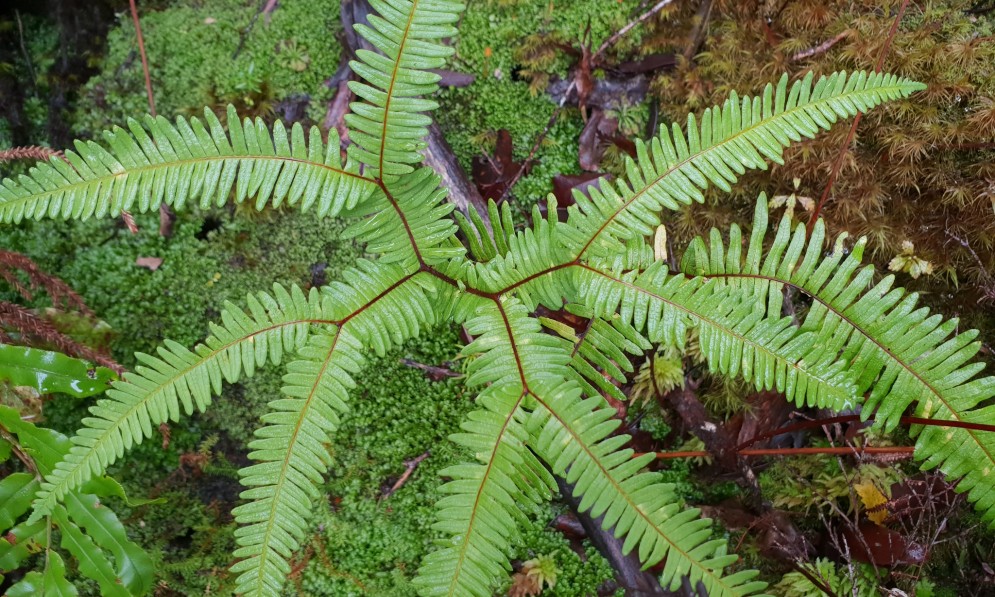
Silky fan fern (Sticherus tener) is found on Denniston’s coal measure. Image Richard Nicol/iNaturalist
Dr David Glenny, of Manaaki Whenua Landcare Research, found nationally threatened and nationally critical liverworts on the Denniston and Stockton plateaux. Some have tiny areas of habitat measuring just of mining disturbance. Other endemic plants that thrive in this mainland sanctuary include eyebright, pixie hat moss, and silky fan fern.
In 2013, despite the strength of the ecological case, the Environment Court allowed the Escarpment Mine to go ahead. That finely balanced decision, Sir Alan said, was swayed in part by comments from the then Minister of Conservation Nick Smith, who downplayed the site’s value on the basis that it was “stewardship land”.
“I really hold Nick Smith responsible for that outcome and the failure of Forest & Bird’s excellent submission on the values of Denniston,” added Sir Alan.
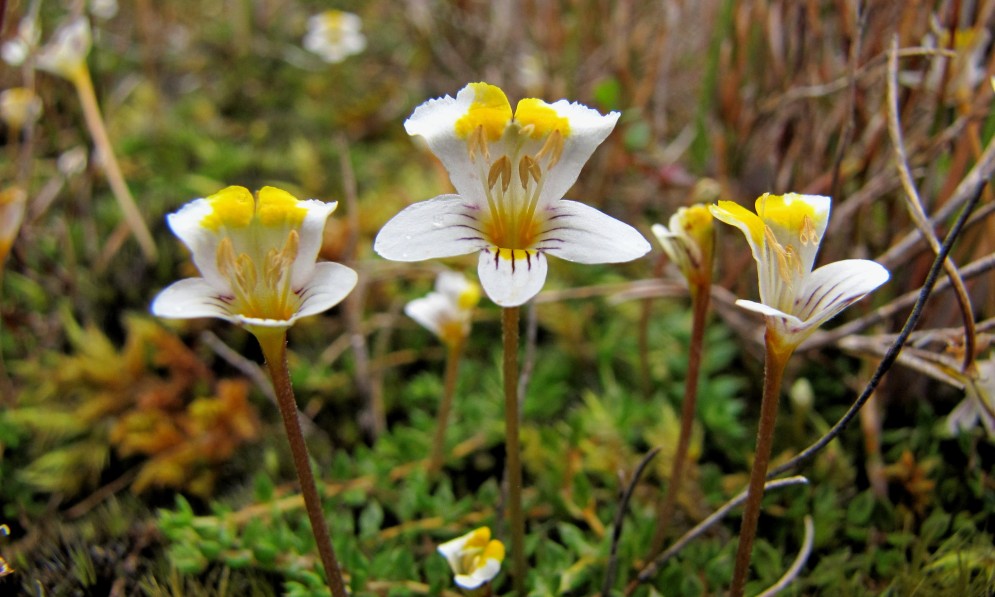
Eyebright Euphrasia wettsteiniana, Denniston. Image Harry Lurling/iNaturalist
It was an example of government ministers misunderstanding the ecological value of stewardship land.
Stewardship land is managed by DOC to protect its natural and historic values, pending assessment of its natural values and reclassification or disposal.
Much of this publicly owned land was allocated to the Department of Conservation when it was formed in 1987. It includes former State forest and Crown land considered to have conservation value.
Forest & Bird wants to see the Denniston Plateau reclassified from stewardship land to scientific reserve, which would protect it from mining.
Love our lichens
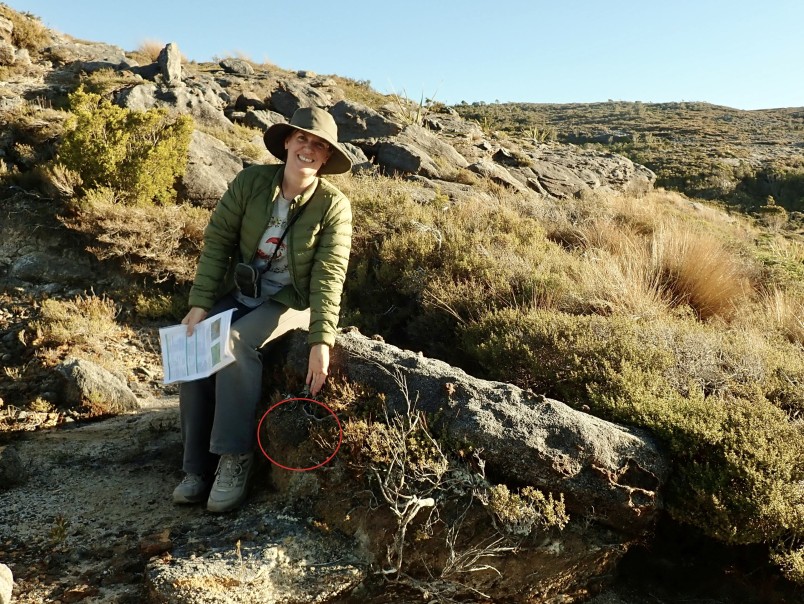
Dr Melissa Hutchison points to the area she found Pycnothelia caliginosa on Denniston, with snow tussock behind. Image supplied
Denniston’s harsh environment – wet, nutrient poor, and exposed – creates the perfect niche for an often-overlooked group.
Ecologist Dr Melissa Hutchison recalls her first sighting at Denniston of Pycnothelia caliginosa, a nationally endangered lichen, which looks a bit like a black and white multi-headed hydra.
It was growing on a pedestal of soil, with a layer of clay over peat and a capping of sandstone rock on top, a very specific habitat requirement.
“It occurs in a naturally uncommon ecosystem and has a really narrow niche,” said Melissa, who was the first to share an observation of the species on iNaturalist.
Another threatened species, the gritty peat pelt lichen, Austropeltum glareosum, tends to prefer saturated peaty soil mixed with grit that’s eroded off the rock.
Once the bulldozers move in, it will be almost impossible to recreate the complex habitats these lichens need to survive.
“As soon as you change any of the conditions, these lichens won’t occur there. That’s why the whole idea of restoring the habitat is a fallacy,” said Melissa.
“If you look at the land rehabilitation, they’re effectively smoothing everything out, leading to homogenisation of the habitat, where only common species with a broader ecological tolerance can survive.
“You’re replacing a diverse and unusual suite of lichens with common and widespread species.”
New Zealand is a global lichen hotspot – with 10% of the world’s lichen flora occurring in only about 0.18% of Earth’s land area. Up to 10 new species are being added to our national species list every year.
“They are so weird and diverse and striking. They’re often bright colours as well,” said Melissa.
“They’re an important part of the whole ecosystem. They provide food and habitat for other species, with complex interactions that we don’t even know about.”
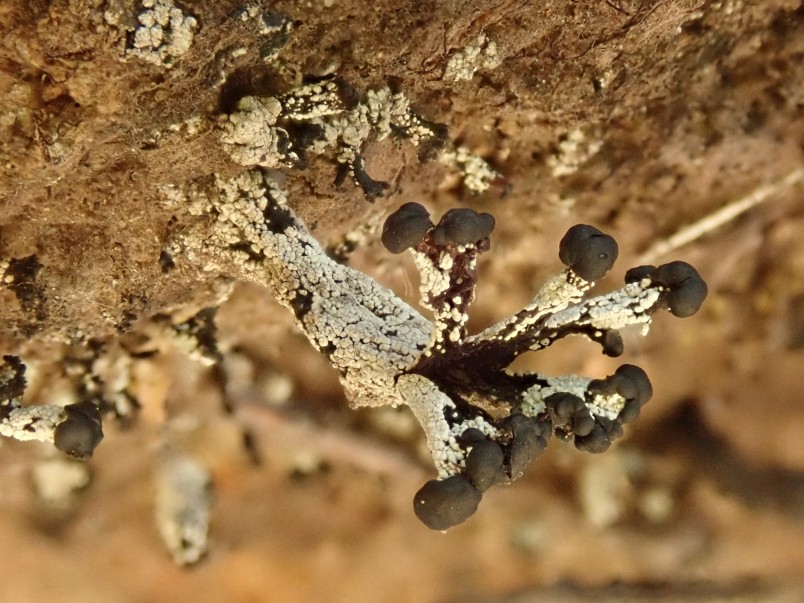
Pycnothelia caliginosa. Image Melissa Hutchison
There are about 56 lichen species found at Denniston, including several threatened species.
More than half of the country’s roughly 2300 known lichen species are classified as “data deficient”, which means scientists know little or nothing about their distribution, population trends, or conservation status.
One example is Pertusaria dennistonensis, a lichen that appears to be endemic to the Denniston and Stockton Plateaux but has barely been seen since it was first found and described.
“New Zealand lichenology is still very understudied. I’d say 10% of our lichens have only ever been seen once,” added Melissa.
“If the mining goes ahead, we could be losing species that we don’t even know are there.”
